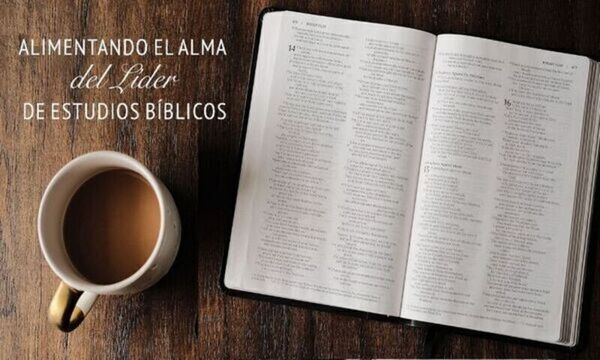The following is the first post in a series of eight posts exploring the beauty of gender from a biblical perspective.
Yes, take the title here both ways: Gender is a topic that matters incredibly as a conversation that touches absolutely every person on the planet, not to mention one that is roiling our society like never before. It is also a topic about which the Bible has much to say ÔÇö there are truly a lot of ÔÇ£gender matters.ÔÇØ After all, we should expect God to tell us about something he created, something that is so ontological and primal to as some would have it. So, in this series of perhaps ÔÇÿheftierÔÇÖ blog posts, let me tackle what I have come to see as the salient issues of this important topic.
As the material on the subject of gender is vast, my aim in this series must be modest ÔÇö definitely not a last word. For more than 20 years, Talbot has had an on gender in its catalog, one that is, in the nomenclature of the conversation, ÔÇ£complementarian.ÔÇØ Full disclosure: I participated in the committee that drew up the most current version). As I hope you will see throughout these posts, my concern is to listen closely to Scripture and as always, I leave for you the reader to judge the results for yourself. LetÔÇÖs get started!
The Beautiful Difference
With credit to Andrew WilsonÔÇÖs prior use of this title in his insightful blog (and ), I begin with a couple of big-picture thoughts. They aim at what Church Fathers called ScriptureÔÇÖs dianoia, or mind, on the topic. Getting the entire flow of ScriptureÔÇÖs message was critical in the heady days of combatting the early Christological and Trinitarian heresies, and itÔÇÖs the same for our consideration of gender [1]. First is that God loves diversity. He endowed human life with it from the beginning in dimensions like race, individual personality traits and gender. This ÔÇÿcreated diversityÔÇÖ, as we shall see further, is still around in the final stage of GodÔÇÖs Story, which besides pointing to its enduring value to him also means that God is a redeemer of diversity, even when corrupted by sin. God finds his glory in diversity and he will do this forever. Indeed, diversity is part of his own revealed identity as Father, Son, and Spirit. However, and this is second for us here, GodÔÇÖs love of diversity does not entail partiality. In his own nature, and in ours, distinction means no diminution, no inferiority or superiority ÔÇö in short, no inequality. As we will see further, a differentiated or asymmetrical equality is true not just of God himself. It is also the biblical picture of human families and the spiritual family of His Body, the Church.
The BibleÔÇÖs language for gender. The Bible knows these two dimensions of human life ÔÇö diversity and equality ÔÇö from its earliest chapters and it distinguishes them with specific terminology. In the first creation account (Gen 1:1ÔÇô2:3), it is the language of biology, ÔÇ£male and female,ÔÇØ that establishes the equality piece. Before God the male and the female both stand as his stewards and representatives (the image of God). Before the creation the ÔÇ£maleÔÇØ and the ÔÇ£femaleÔÇØ both stand as rulers. Of this there is no dispute by anyone in the gender debate, and as long as the conversation stays on equality, the urgency of egalitarians is well rewarded [2]. The second creation account beginning at Genesis 2:4 is where the focus narrows to the relationship of Adam and Eve, and this is where the distinction of the two equals starts to emerge. The terminology that covers this new vantage point is now ÔÇ£man and womanÔÇØ and this is how the Bible will continue to speak of the social and cultural categories of what it means to be a man and woman (ÔÇ£masculineÔÇØ or ÔÇ£feminineÔÇØ), which is the definition of gender [3]. As ÔÇ£manÔÇØ and ÔÇ£woman,ÔÇØ the BibleÔÇÖs writers will present humanity as a beautiful union of interdependence, inclusion, harmony and mutuality (Gen 2:24, 1 Cor 11, Mark 10, 1 Tim 2). They will also present them as distinct to one another with differences that flow from the creation account of their order, origin and calling (1 Cor 11, 14, Eph 5, 1 Tim 2, Titus 2, 1 Pet 3) [4].
Gender: differently endowed persons in relationship. As this Beautiful Difference unfolds in Scripture, it is especially important that we keep our eye on the man and the womanÔÇÖs mutuality, union and harmony just noted. This will be the biblical context that tells us why God gave us gender distinctions in the first place. In it we see that gender is a gift from God for building relationships with the other gender [5]. Just like all of the resources we possess from God as part of our ÔÇ£identityÔÇØ in the popular sense ÔÇö our personality, race, emotions, etc. ÔÇö gender is something granted us from which we serve others. ItÔÇÖs part of the grand narrative of the Bible where we find that our goal is to give ourselves away in love to others different from us, and beyond that, that in relationship with others our own lives are enriched. You know, lose your life to find real life? Sounds biblical even [6]!
It is the same with God himself. This is why the appearance of our human biological diversity in the context of the image of God in Genesis 1:27 is about something more than just our ability to reproduce [7]. No, something bigger is emerging here in the BibleÔÇÖs Story that is representative of the Living God Himself. It is not that God has a body. It is not that he is male and femaleÔÇösuch things are indeed ÔÇ£creaturely.ÔÇØ But it is that he himself is a ÔÇ£complexÔÇØ relational union of persons (or perhaps better, personal manifestations). HeÔÇÖs a ÔÇ£being-in-relation,ÔÇØ as theologians say [8]. Thus, Robert Letham and many others can remind us that human sexuality/gender stands as ÔÇ£the form taken by manÔÇÖs relationality, which is the created counterpart to GodÔÇÖs self-existent relationalityÔÇØ [9]. In other words, connection to the image of God makes our sexual/gendered embodiment as male and female a unique and divinely ordained matter of persons in relationship. This is big, and this is worthy of GodÔÇÖs image in GodÔÇÖs Story.
Notes
[1] According to Athanasius, the Arians failed to capture ScriptureÔÇÖs ÔÇ£ecclesiastical │¥¥▒▓È╗ÕÔÇØ in their proof-texting, atomizing, and extracting verses from the entire fabric of ScriptureÔÇÖs narrative plot (Athanasius, Against the Arians, I.44, cited by Hans Boersma, Five Things Theologians Wish Biblical Scholars Knew [Downers Grove, IL: IVP, 2021], 18). Disagreement about gender is obviously not a first-order question of heresy like Arianism. OneÔÇÖs eternal state doesnÔÇÖt depend on getting this right, letÔÇÖs be clear.
[2] Christa McKirlandÔÇÖs account of this side of creation in the latest edition of Discovering Biblical Equality (Downers Grove: IVP Academic, 2021) is in many respects quite good in my view (Chapter 15, ÔÇ£The Image of God and Divine PresenceÔÇØ).
[3] J. Richard Middleton says ÔÇ£manÔÇØ and ÔÇ£womanÔÇØ in Gen 2ÔÇô3 is about the ÔÇ£social categoriesÔÇØ of sex and gender (J. Richard Middleton, The Liberating Image: The Imago Dei in Genesis 1 [Grand Rapids, MI: Brazos, 2005], 50, cited by McKirland, ÔÇ£Image of God and Divine Presence,ÔÇØ 294). Elaine Storkey considers gender as the social and cultural categories of what it means to be men and women (Storkey, ÔÇ£Evangelical Theology and Gender,ÔÇØ in Cambridge Companion to Evangelical Theology, eds. Timothy Larsen and Daniel J. Trier [Cambridge, UK: CUP, 2007], 162).
[4] It is significant that Paul in Gal 3:28 does not say ÔÇ£there is neither man nor womanÔÇØÔÇölanguage that would indeed be very relevant for the distinctions involved with gender. Declaring, as he does, that ÔÇ£there is neither male nor femaleÔÇØ, he is taking the reader back to the taxonomy of Genesis 1ÔÇöa taxonomy where gender differences are not in view. PaulÔÇÖs burden is to counter discrimination regarding standing before God (viewpoint of Gen 1), not relationship to one another (viewpoint of Gen 2ÔÇô3).
[5] See Sam A. AndreadesÔÇÖ important book, EnGendered: GodÔÇÖs Gift of Gender Difference in Relationship (Grand Rapids, MI: Kregel, 2015). I have posted a GBB review here.
[6] It is: Matt 10:39 and pars.
[7] The view of McKirland, (ÔÇ£Image of God and Divine Presence,ÔÇØ 291ÔÇô292) and Mary Conway (ÔÇ£Gender in Creation and Fall,ÔÇØ 38ÔÇô42), in DBE (3rd ed.).
[8] Cherith Fee Nordling, ÔÇ£The Human Person in the Christian Story,ÔÇØ in Cambridge Companion to Evangelical Theology, 79.
[9] Robert Letham, ÔÇ£The Man-Woman Debate: Theological Comment,ÔÇØ WTJ 52 (1990): 65ÔÇô78, here, 72. See also the fine discussion by Storkey, ÔÇ£Evangelical Theology and Gender,ÔÇØ 167ÔÇô170.
 ¢±╚€║┌┴¤
¢±╚€║┌┴¤

.jpg)

.jpg)
.jpg)